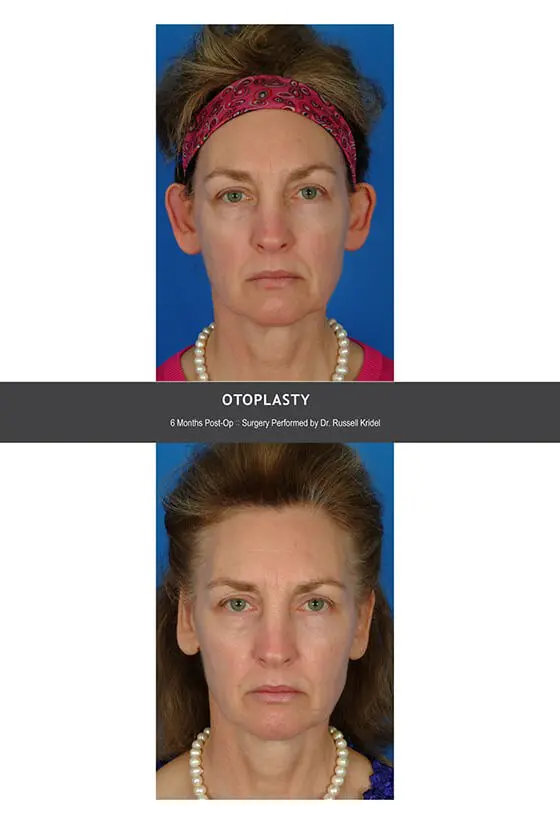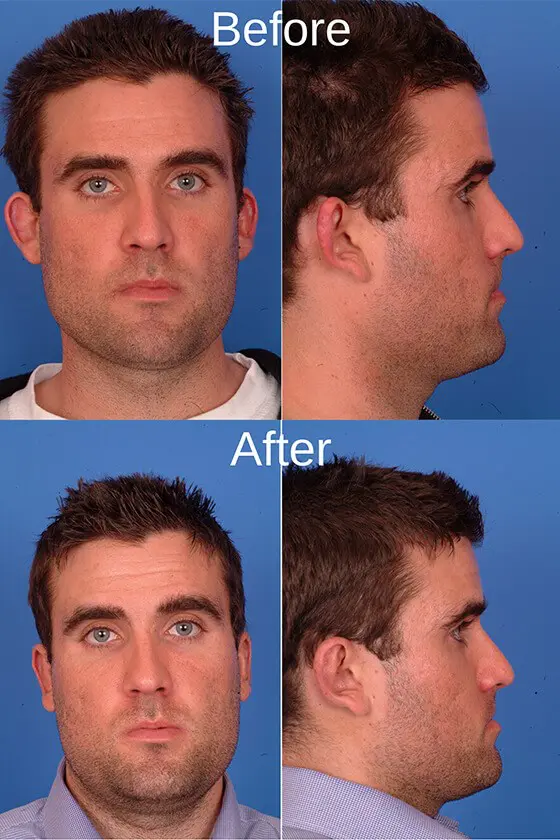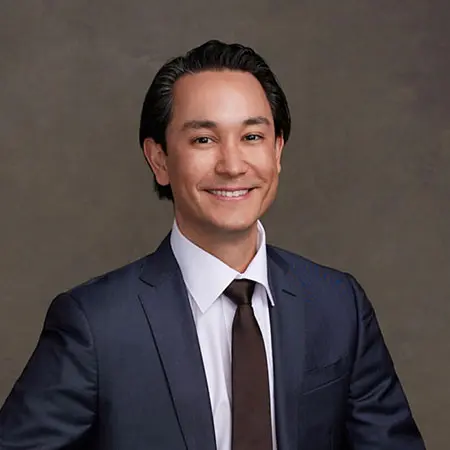June 09, 2020 | Protruding Ears
5 minute read
Protruding ears often make a person very self-conscious about their appearance. This can be exacerbated during childhood by bullying and name-calling. And in a selfie-oriented culture, protruding ears for can be further exaggerated with common cell phone camera angles. Fortunately, there is a facial plastic surgery procedure that can readily address this aesthetically. Otoplasty performed in the hands of a highly trained facial plastic surgeon such as Dr. Russell Kridel, is a surgical procedure that delivers fantastic, long term results
What is Otoplasty? Otoplasty refers to the surgical reshaping of the pinna or outer ear to correct a deformity or to improve appearance.
What is the difference between Reconstructive vs Cosmetic ear surgery? Reconstructive surgery involves building up the outer ear after an accident or because of a congenital deformity. However, pinning back the ears so that they look better is a cosmetic procedure. Dr. Kridel performs Otoplasty techniques that are specific to your individual needs and desired aesthetic result. In some instances, it requires both reconstruction and cosmetic techniques.
Otoplasty surgery is more commonly performed during childhood because ear abnormalities for children can result in bullying and effect self-esteem. But, it can also be performed on adults. Research studies have found that people who underwent otoplasty to reduce protruding ears felt they had a better quality of life after the operation.
The outer ear is normally positioned on the side of the head at an angle of about 20 to 35 degrees. If the angle is more than 35 degrees, they will appear to “stick out.” Ears can be considered prominent if they stand out more than 2 centimeters from the side of the head.
Protruding ears may run in families, but they often occur randomly. There are no exact statistics about how many children are born with a congenital ear deformity, but several studies suggest it is around 6% of the general population. Around 30% of children with prominent ears have ears that appear normal at birth, but the unusual shape can appear in the first 3 months.
There are three main types of otoplasty. The most common is known as Otopexy, which is pinning the ear back, in essence “flattening” protruding ears. Ear reduction can reduce the pinna when it is too big. Ear augmentation is needed if the pinna is underdeveloped or non-existent, known as microtia.
Ear deformities occur for a number of reasons:
- Underdevelopment of the cartilage: the ridge of cartilage at the top of the ear does not fold properly during development. The outer edge of the ear does not fold in toward the head but sticks outward instead.
- Overdevelopment of the cartilage: if the pinna has too much cartilage, it is more likely to be prominent and result in a less desirable appearance.
- Injury: prominent ears can result from an injury to the ears.
Otoplasty is performed on an out-patient basis for adults. Adults can undergo surgery with intravenous sedation supplemented with local anesthesia. Dr. Kridel performs Otoplasty surgery in our AAAHC certified in-office surgical suite or at an outpatient surgical facility such as Memorial Hermann Kirby Glen. For children, it is still an outpatient procedure, however, general anesthesia is required for Otoplasty surgery. Dr. Kridel will perform Otoplasty on children at Methodist Hospital or Memorial Hermann Kirby Glen. In children, general anesthesia is used.
For Otoplasty, Dr. Kridel will make an incision behind the ear. The procedure lasts approximately one to two hours. There is a thin scar, but it is localized behind the ear and out of view. The scar will fade over time until it becomes virtually undetectable.
After surgery, the patient will need bandages over their ears for several days after surgery. While the bandages are in place, they will not be able to wash their hair. After removing the bandages, a loose but supportive headband is worn over the ears at night. This will help remove tension from the ears. The headband should be worn loose to prevent the ears from being pulled forward if the patient moves while sleeping.
The individual can return to school or work within a week of surgery. Patients should avoid activities that could cause trauma or injury to the ears during the recovery period. Physical contact sports, such as judo, rugby, or football should be avoided for at least 3 months. Swimming should be avoided for up to 8 weeks after surgery.
An otoplasty is a safe and successful procedure, with high satisfaction rates. But, it is also important to have realistic expectations about what can be achieved through plastic surgery, whether reconstructive or cosmetic. Otoplasty can change the appearance of ears, making them less prominent or smaller, but perfect symmetry is not always possible, nor is it necessary. Everyone is a little asymmetric, so you want to look natural.
Like other procedures involving the head and neck, it is critically important that you select a highly trained facial plastic surgeon like Dr. Kridel. He focuses solely on the neck and up and know the anatomy inside and out, so you will be in the best of hands.






